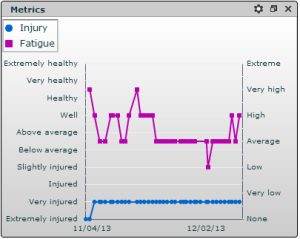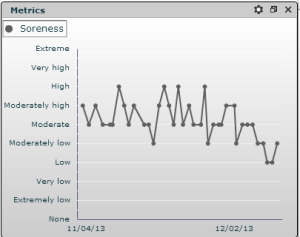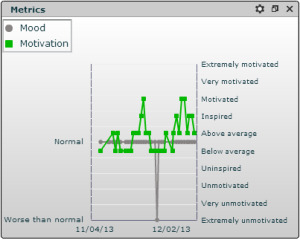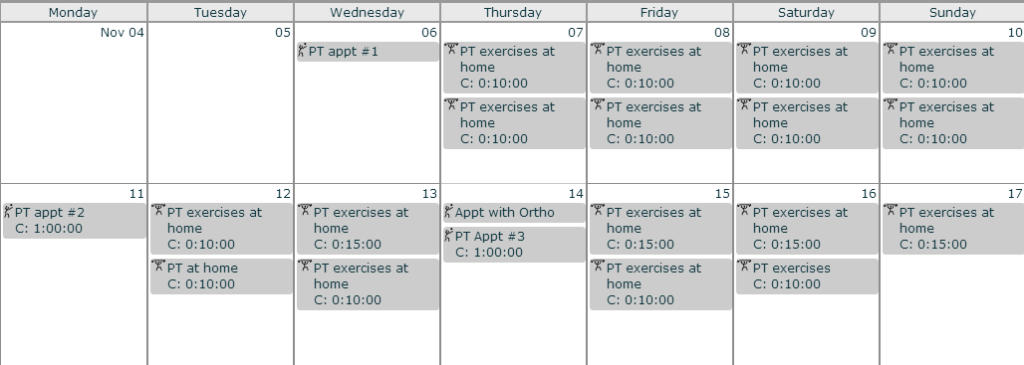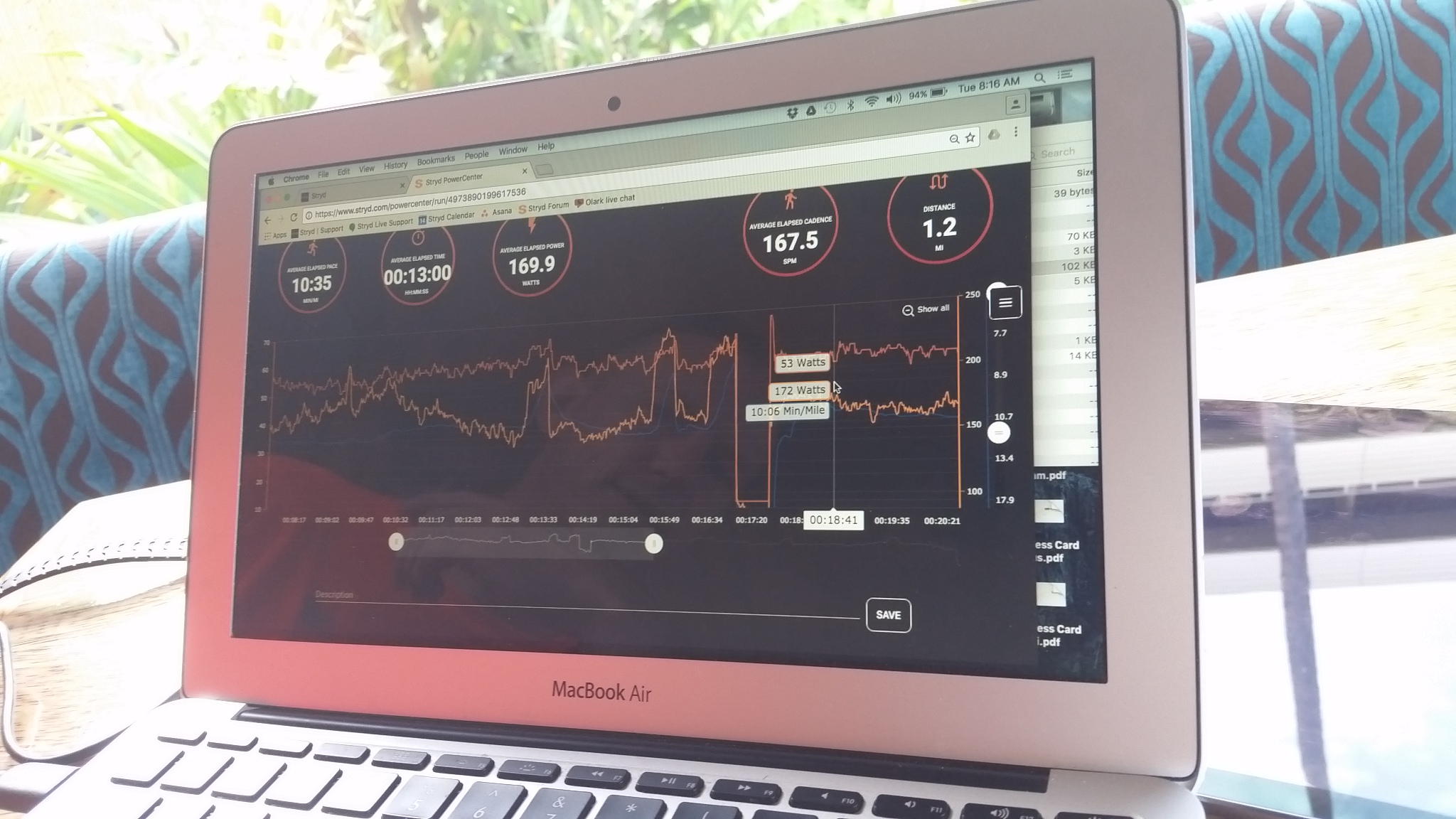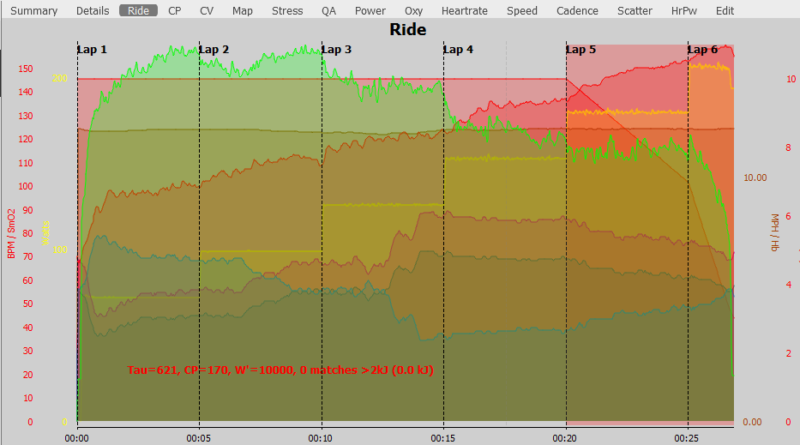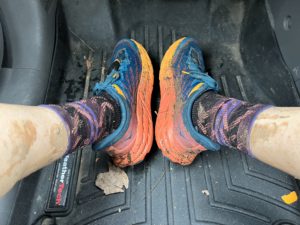TrainingPeaks is a very powerful online software tool to track our workouts as well as nutrition. But we don’t have to let our account sit idle if we aren’t training! It’s also a useful platform even if you can’t train, especially if the reason is due to injury.
About six weeks ago I had surgery to repair a torn labrum in my hip. While it was an arthroscopic procedure and outpatient, the recovery is a fairly long one. I was on crutches for the first two weeks, and I won’t be able to run for about four months.
I wanted to track my recovery so that I could see the trend of my improvement. Sometimes we get caught up in how we feel at the particular moment, and forget about the actual trend. Due to the long nature of the recovery, I thought it would be a really good idea to monitor how I felt each day. Additionally, this is useful to so that I can give accurate feedback to my doctors, not just the “how I feel right now” data.
Here’s how I’m using TrainingPeaks to track my recovery.
Metrics
This isn’t the first time I’ve used the metrics feature, but I am definitely a lot more diligent about using them now! Most of the metrics relating to my recovery are subjective, as quite a few of them revolve around measurements of “average,” “below average,” “bad,” “above average,” “good” and similar terms. But as long as you are consistent with how you define what “average” means, you’ll be able to see the trend.
I can track my injury status, which since I can’t do much beyond walk short distances now, has been “very injured.” I was “extremely injured” for the first couple days since I had to let the pain block wear off my leg and was on quite a bit of meds. As I get clearance to do more things and use some resistance in training, I’ll move up the scale.
You can see in the above graph I’m also tracking fatigue. (You can put two metrics on one chart and you can pair any two metrics.) My fatigue now is dropping more towards the average side of things. I do know that during the first few weeks I was more fatigued (Due to the initial recovery, and Valium made me sleepy!). I probably could have tracked this a few times a day to see more variation in fatigue levels. Now that I’ve got the initial healing under my below, I’m average. (The last couple points are due to non-optimal sleep.)
Sleep hours is a metric every athlete should track, as well as sleep quality. Getting good sleep is needed for recovery (injury or not!) Fortunately I sleep pretty much through the night, but if you are one to have issues with waking up, or if pain wakes you often, you can also track “times woken.” What I could have also tracked but didn’t, was additional sleep from naps, because during the first two weeks, I napped quite a bit!
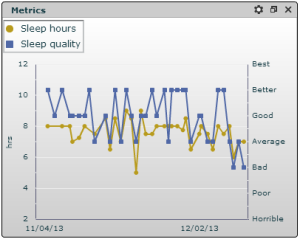
Other useful metrics to monitor injury recovery are soreness, mood, and motivation. With the soreness metric I can see how I’m feeling day to day, as I know I go through ups and down. Because this is a long-term recovery, it’s not dipping super fast, but I’ve had more moderately-low days recently with even a couple low days.
My mood is typically pretty stable, but I did have one bad day. Since I’m still achy at times, I can’t say I’ve had “better than normal” mood days. And if you know me, I tend to be pretty stable in the mood department. Because I only had one bad day (I remember being pretty grumpy!) means I’m handling the recovery well. My motivation to get things done is also on the upward swing. This pairs well with mood, and since I’m pretty even-keeled, I typically won’t be very unmotivated. I also love my job, which keeps me on the motivated side of things.
One thing to think about when monitoring metrics is when during the day to track. I’ve only been tracking how I feel in the morning, but it might be useful to track some metrics a few times a day, as things like fatigue, and even soreness, can vary throughout the day.
Workouts
While I am not “training,” I am doing things that I can track on the calendar. I use strength workouts to track my physical therapy exercises, and logging these helps keep me accountable to get them done. I can write in what I did and how it went, if any particular exercise felt better or worse. It’s a way to note progress with the exercises.
I also use “other” workouts to track my physical therapy sessions and doctor visits. I make note of how it went, if there were any comments from the PT or any updates on my “official” progress. Here’s what my first two weeks looked like once I started PT (a week post-op).
Now that the incisions have healed, I can get in the pool and pull. I am also able to spin on my bike with no resistance. So technically I can “workout” (if you call a 20 minute 35 watt average power spin a workout.) So it feels good to be logging some kind of data, even if it is pretty trivial. But over time we’ll be able to see this improve as I heal and get cleared to add resistance.
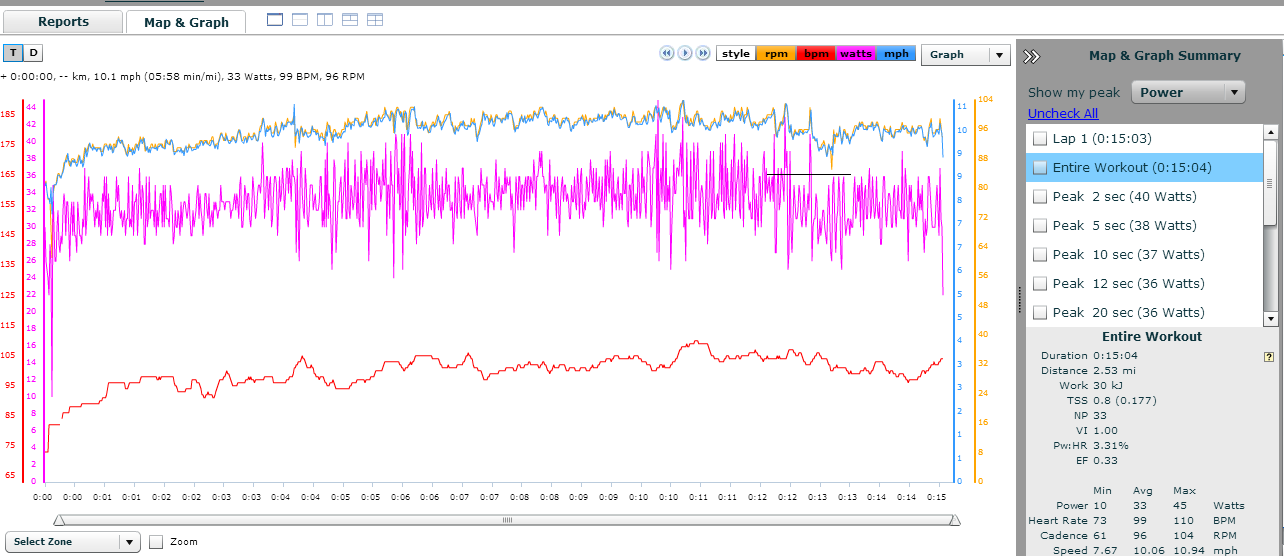
The Big Picture
Having a clear picture of my progress as I work through the recovery process is already proving useful. When I go to my 6-week post-op appointment on Thursday, I’ll be able to provide accurate information to my doctor. Down the road I’ll also be able to look back and have a correct recollection of the recovery process, which can potentially help others dealing with this injury. I will know exactly when I really started to feel better, when I could get back to some training, and when I feel 100%. I’m certainly not there yet, but I can tell after about 5 and a half weeks I’ve turned a corner, and we can see those improvements in the metrics.
Remember, you don’t have to be injured to use these metrics! Tracking things like sleep, fatigue, and motivation can help you make sure your training load is appropriate. It can help let you and your coach know if you need an easy or rest day, or if you are feeling awesome all the time, maybe you need a bigger training load! Take a look at the metrics (there are quite a few available) and choose the ones that would be useful for you. Happy tracking!

